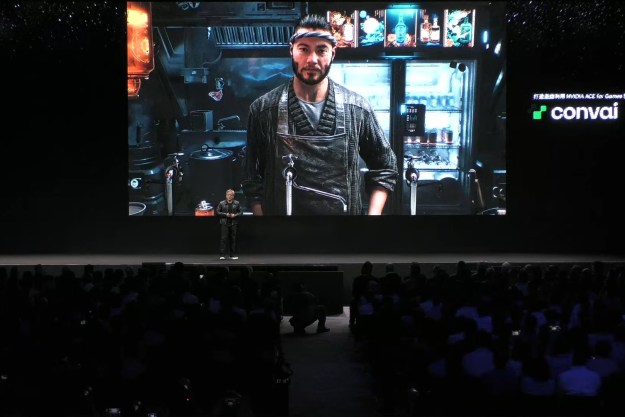Professional drone racers are the latest to suffer the ignominy of being outsmarted by artificial intelligence after quadcopters powered by the technology beat them at their own game.
Wearing first-person-view headsets linked to a camera on their drone, the champion racers had great difficulty keeping pace with the AI flying machine, called Swift.
Developed by researchers at the University of Zurich in Switzerland, Swift zipped its way to 15 victories in 25 races against some of the best drone pilots in the world.
Showing humans how it’s done, Swift also clocked the fastest lap while navigating obstacles at speeds of up to 62 mph (100 kph). “All of this while only relying on an onboard computer, a single camera, and an inertial sensor,” the team said in a video (top) shared on Thursday.
“Physical sports are more challenging for AI because they are less predictable than board or video games,” said Davide Scaramuzza, head of the Robotics and Perception Group at the University of Zurich. “We don’t have a perfect knowledge of the drone and environment models, so the AI needs to learn them by interacting with the physical world.”
The team noted that until recently, autonomous drones took twice as long as human-piloted drones to navigate a racetrack, unless they were linked to an external position-tracking system to create a more precise flight path.
But Swift is in a league of its own, reacting in real time to the data collected by an onboard camera similar to the one used by human racers.
“Its integrated inertial measurement unit measures acceleration and speed while an artificial neural network uses data from the camera to localize the drone in space and detect the gates along the racetrack,” the team explains on its website. “This information is fed to a control unit, also based on a deep neural network, that chooses the best action to finish the circuit as fast as possible.”
Training for Swift started off in a simulated environment to avoid destroying numerous drones. Once the software was good enough, it was refined through flights using a real machine.
When it was ready, it pitted its skills against Alex Vanover, the 2019 Drone Racing League champion; Thomas Bitmatta, the 2019 MultiGP Drone Racing champion; and three-times Swiss champion Marvin Schaepper.
The racetrack covered an area of 25 by 25 meters, with seven square gates that had to be passed in the right order to complete a lap. The contest also involved challenging maneuvers such as a Split-S, an acrobatic move that involves half-rolling the drone and executing a descending half-loop at full speed.
While Swift achieved the fastest lap, the human pilots were more adaptable than the autonomous drone, which encountered difficulties when the conditions were different from those it was trained on — for example, if brighter lights were shining on the course.
The team said that its research isn’t just about beating pro drone racers using a robot drone, explaining that with limited flight time due to battery constraints, flying the autonomous machines at greater speed makes them more efficient and therefore more useful for things like search-and-rescue missions, forest monitoring, or even space exploration.
AI-powered software has long been able to beat humans at games like chess and Go, but Swift’s achievement in drone racing is believed to be a world’s first.
Editors' Recommendations
- YouTube tells creators to start labeling ‘realistic’ AI content
- Boston Dynamics uses ChatGPT to create a robot tour guide
- Tom Hanks warns of AI-generated ad using his likeness
- Hollywood writers strike ends after agreement on AI and other issues
- Spotify using AI to clone and translate podcasters’ voices


